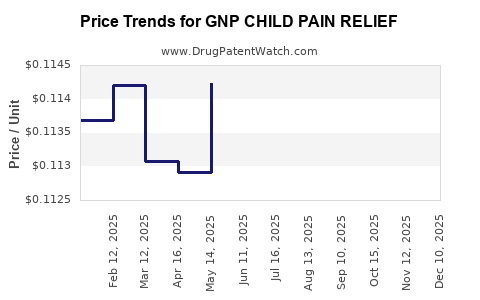Drug Price Trends for GNP CHILD PAIN RELIEF
✉ Email this page to a colleague

Average Pharmacy Cost for GNP CHILD PAIN RELIEF
| Drug Name | NDC | Price/Unit ($) | Unit | Date |
|---|---|---|---|---|
| GNP CHILD PAIN RELIEF 160 MG | 46122-0424-62 | 0.10612 | EACH | 2024-11-20 |
| GNP CHILD PAIN RELIEF 160 MG | 46122-0424-62 | 0.11927 | EACH | 2024-10-23 |
| GNP CHILD PAIN RELIEF 160 MG | 46122-0424-62 | 0.11773 | EACH | 2024-09-18 |
| GNP CHILD PAIN RELIEF 160 MG | 46122-0424-62 | 0.09540 | EACH | 2024-08-21 |
| GNP CHILD PAIN RELIEF 160 MG | 46122-0424-62 | 0.09474 | EACH | 2024-07-17 |
| >Drug Name | >NDC | >Price/Unit ($) | >Unit | >Date |


